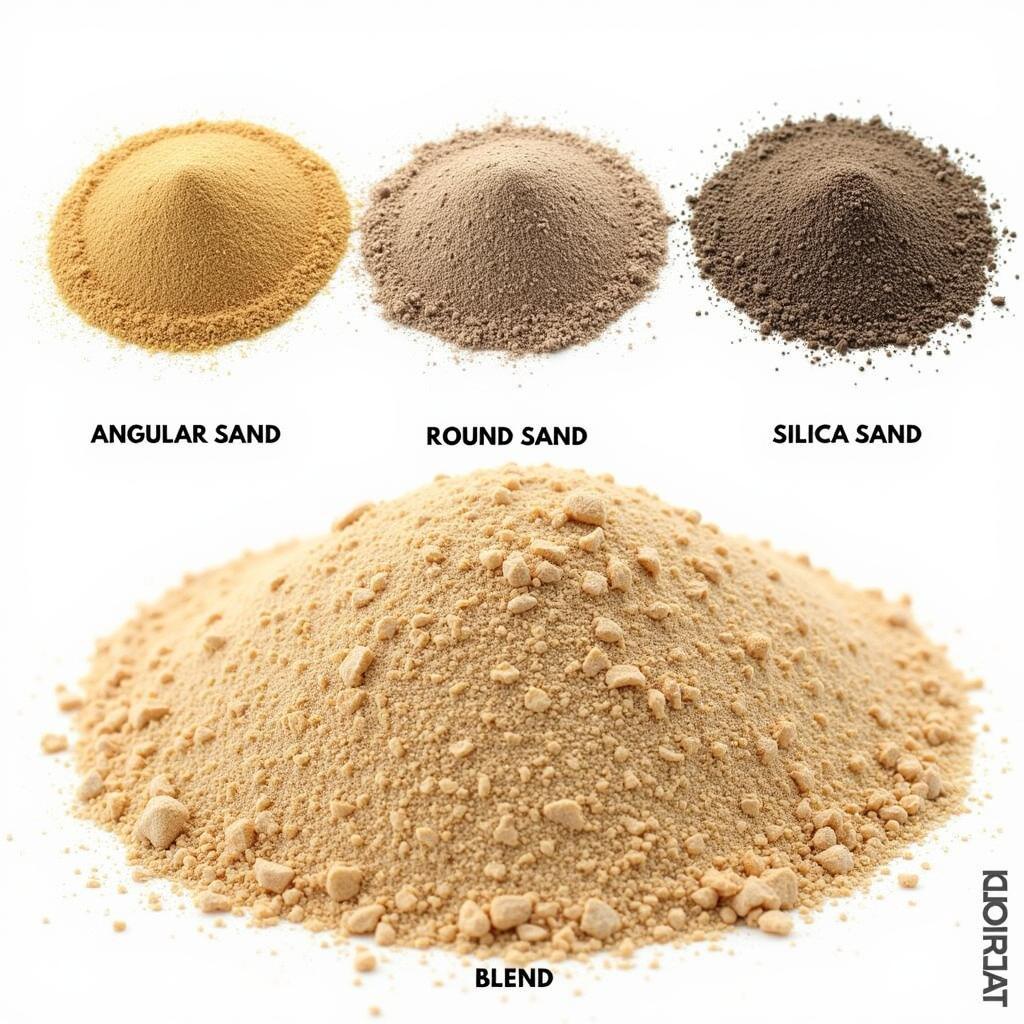Finding the right horse arena sand near you is crucial for the safety and performance of your equine companion. Whether you’re building a new arena or refurbishing an existing one, the type of sand you choose plays a significant role in your horse’s well-being and your riding experience. This guide will help you navigate the world of horse arena sand, providing you with the information you need to make the best decision for your needs.
Choosing the perfect footing for your horse arena can feel like navigating a maze. From the different types of sand available to the factors impacting cost and maintenance, there’s a lot to consider.  Different Types of Horse Arena Sand But fear not! With a little research and the right guidance, you can find the ideal horse arena sand near you that caters to both your horse’s comfort and your budget. We’ll cover everything from understanding the different types of sand to tips on finding local suppliers.
Different Types of Horse Arena Sand But fear not! With a little research and the right guidance, you can find the ideal horse arena sand near you that caters to both your horse’s comfort and your budget. We’ll cover everything from understanding the different types of sand to tips on finding local suppliers.
Types of Horse Arena Sand
Understanding the various types of horse arena sand available is the first step in your journey. Each type offers unique properties that affect drainage, cushioning, and overall performance.
Angular Sand
Angular sand, known for its sharp edges, provides excellent stability and traction. This type of sand interlocks well, creating a firm surface ideal for various disciplines. However, it can be more abrasive than other types and may require more watering to maintain optimal moisture levels.
Round Sand
Round sand, with its smooth, rounded particles, offers a softer, more cushioned ride. This makes it a popular choice for disciplines requiring more give, such as jumping. However, round sand can become loose and dusty, especially in dry climates, impacting footing stability.
Silica Sand
Silica sand, a fine-grained option, offers exceptional drainage and dust control. Its small particles bind well, creating a consistent surface. This makes it a popular choice for indoor arenas or regions with high humidity. However, silica sand can be more expensive than other options. When considering silica sand, researching “horse arena cost” can give you a clearer understanding of the overall financial implications. You can also find more information about different arena options by exploring resources on horse arenas.
Finding Horse Arena Sand Near Me
Now that you understand the various types of sand, it’s time to locate suppliers near you. Here are a few strategies:
- Online Search: Use search engines with keywords like “Horse Arena Sand Near Me” to find local suppliers.
- Local Feed Stores: Your local feed store often carries horse arena sand or can point you in the right direction.
- Equestrian Centers: Inquire with local equestrian centers as they often have recommendations for reputable suppliers.
- Contractors: If you’re building a new arena, your contractor can likely recommend or source the sand for you.
Factors Affecting Cost
Several factors influence the cost of horse arena sand, including:
- Type of Sand: As mentioned earlier, silica sand is typically more expensive.
- Quantity: Larger arenas require more sand, increasing the overall cost.
- Delivery: Delivery fees can vary depending on the distance and quantity.
If you’re looking for horse boarding in North Carolina, you can often find facilities with well-maintained arenas, saving you the upfront cost of sand installation. You can learn more by checking out our resource on horse boarding North Carolina.
Maintaining Your Arena Footing
Maintaining proper footing is essential for your horse’s safety and performance. Regular harrowing and watering help keep the sand level and prevent it from becoming too hard or dusty. Additionally, adding footing amendments can improve moisture retention and cushioning.
Conclusion
Choosing the right horse arena sand near you requires careful consideration of various factors. By understanding the different types of sand, their properties, and the factors affecting cost, you can create a safe and enjoyable riding environment for both you and your equine partner. Remember to maintain your arena regularly to ensure optimal performance and longevity. For those interested in gymkhana, finding the right arena sand is essential for quick turns and fast speeds. If you’re looking for a suitable horse, check out our selection of gymkhana horses for sale. Looking to improve your riding skills? Find horse riding lessons in my area to connect with qualified instructors.
FAQ
- What is the best type of sand for a jumping arena?
- How often should I water my arena?
- What are the benefits of using angular sand?
- How can I find local suppliers of horse arena sand?
- What is the average cost of horse arena sand?
- How do I maintain my arena footing?
- What are some common footing amendments?
Common Scenarios and Questions:
Scenario: My arena footing is too hard. Question: What can I do to soften it?
Scenario: My arena is too dusty. Question: How can I reduce the dust?
Scenario: I’m building a new arena. Question: What type of sand is best for dressage?
Further Resources:
For more information on related topics, explore these resources on our website: horse arena cost and horse arenas.
Contact us for support: Phone: 0772127271, Email: [email protected] or visit us at QGM2+WX2, Vị Trung, Vị Thuỷ, Hậu Giang, Việt Nam. We have a 24/7 customer service team.